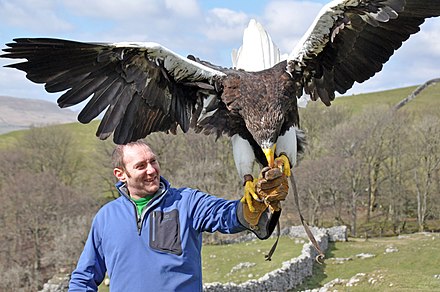The Steller’s Sea Eagle, a majestic bird of prey, is a species of great interest to nature enthusiasts and conservationists alike. With a total population size of around 4,600-5,100 individuals, including approximately 1,830-1,900 breeding pairs, understanding the dynamics and characteristics of this species is crucial for its preservation.
The Steller’s Sea Eagle Population
According to the IUCN Red List, the total population size of Steller’s Sea Eagles is around 4,600-5,100 individuals, including around 1,830-1,900 breeding pairs. These birds are native to the Far Eastern region of Russia, specifically the Kamchatka Peninsula, and can also be found in Japan, China, and Korea.
Habitat and Migration Patterns
 Image source: stellers sea eagle
Image source: stellers sea eagle
Steller’s Sea Eagles prefer habitats with large trees and floodplain forests of larches, alders, willows, and poplar. In Kamchatka, they overwinter in forests and river valleys near the coast, but their distribution across the peninsula is irregular. Eagles that migrate fly down to winter in rivers and wetlands in Japan, but they may occasionally move to mountainous inland areas as opposed to the sea coast.
The timing, duration, and extent of Steller’s Sea Eagles’ migration usually depend on ice conditions and food availability. The birds typically depart between late March and late April, with adults leaving before immatures. Migrants tend to follow sea coasts and usually fly singly.
Feeding Habits
Steller’s Sea Eagles feed primarily on fish, especially salmonids, taken alive or dead. They are also opportunistic and versatile as both scavengers and predators. A variety of birds and mammals are taken when primary prey species are scarce, and seabirds are an important food source for them.
Conservation Status and Threats
The International Union for Conservation of Nature (IUCN) considers the Steller’s Sea-eagle “Vulnerable” due to moderate population decline and from mortality caused by lead poisoning while overwintering in inland Japan. These birds are legally protected in Russia, Japan, China, and South Korea.
Physical Characteristics and Unique Features
Adult Steller’s Sea-eagles are dark brown overall with white forehead, shoulders, thighs, and tail, and heavy, yellow feet and beak. The tail is strongly wedged, and the plumage is identical between sexes. A dark morph lacks all white patches except for the tail. Juvenile Steller’s Sea-eagles are brown with light streaking throughout and progress through four or five intermediate plumages.
Steller’s Sea Eagles are unique among all sea eagles in having a yellow beak even in juvenile birds and possessing 14, not 12, rectrices (tail feathers).
Conclusion
The Steller’s Sea Eagle, a majestic and iconic bird of prey, faces ongoing challenges to its population and habitat. Understanding the species’ characteristics, migration patterns, and conservation status is crucial for developing effective strategies to protect this remarkable avian species. By raising awareness and supporting conservation efforts, we can ensure the continued presence of these magnificent birds in their natural habitats.

